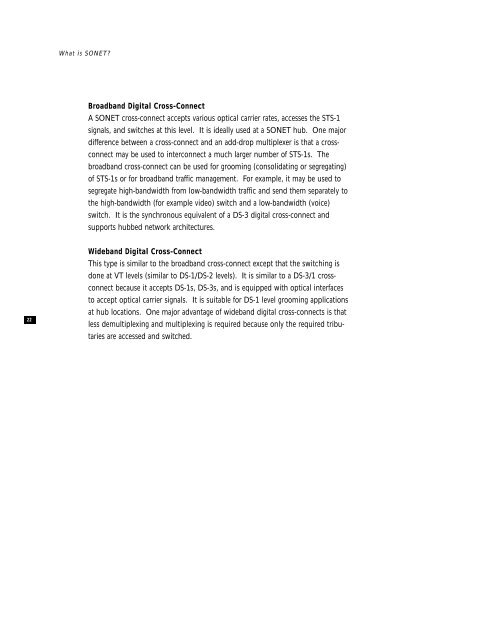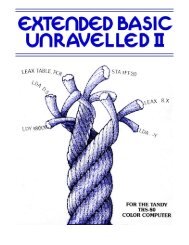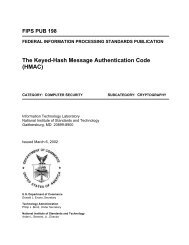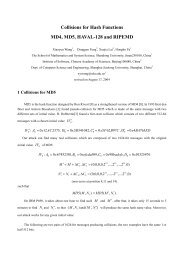sonet 101
sonet 101
sonet 101
Create successful ePaper yourself
Turn your PDF publications into a flip-book with our unique Google optimized e-Paper software.
What is SONET?<br />
Broadband Digital Cross-Connect<br />
A SONET cross-connect accepts various optical carrier rates, accesses the STS-1<br />
signals, and switches at this level. It is ideally used at a SONET hub. One major<br />
difference between a cross-connect and an add-drop multiplexer is that a crossconnect<br />
may be used to interconnect a much larger number of STS-1s. The<br />
broadband cross-connect can be used for grooming (consolidating or segregating)<br />
of STS-1s or for broadband traffic management. For example, it may be used to<br />
segregate high-bandwidth from low-bandwidth traffic and send them separately to<br />
the high-bandwidth (for example video) switch and a low-bandwidth (voice)<br />
switch. It is the synchronous equivalent of a DS-3 digital cross-connect and<br />
supports hubbed network architectures.<br />
22<br />
Wideband Digital Cross-Connect<br />
This type is similar to the broadband cross-connect except that the switching is<br />
done at VT levels (similar to DS-1/DS-2 levels). It is similar to a DS-3/1 crossconnect<br />
because it accepts DS-1s, DS-3s, and is equipped with optical interfaces<br />
to accept optical carrier signals. It is suitable for DS-1 level grooming applications<br />
at hub locations. One major advantage of wideband digital cross-connects is that<br />
less demultiplexing and multiplexing is required because only the required tributaries<br />
are accessed and switched.






